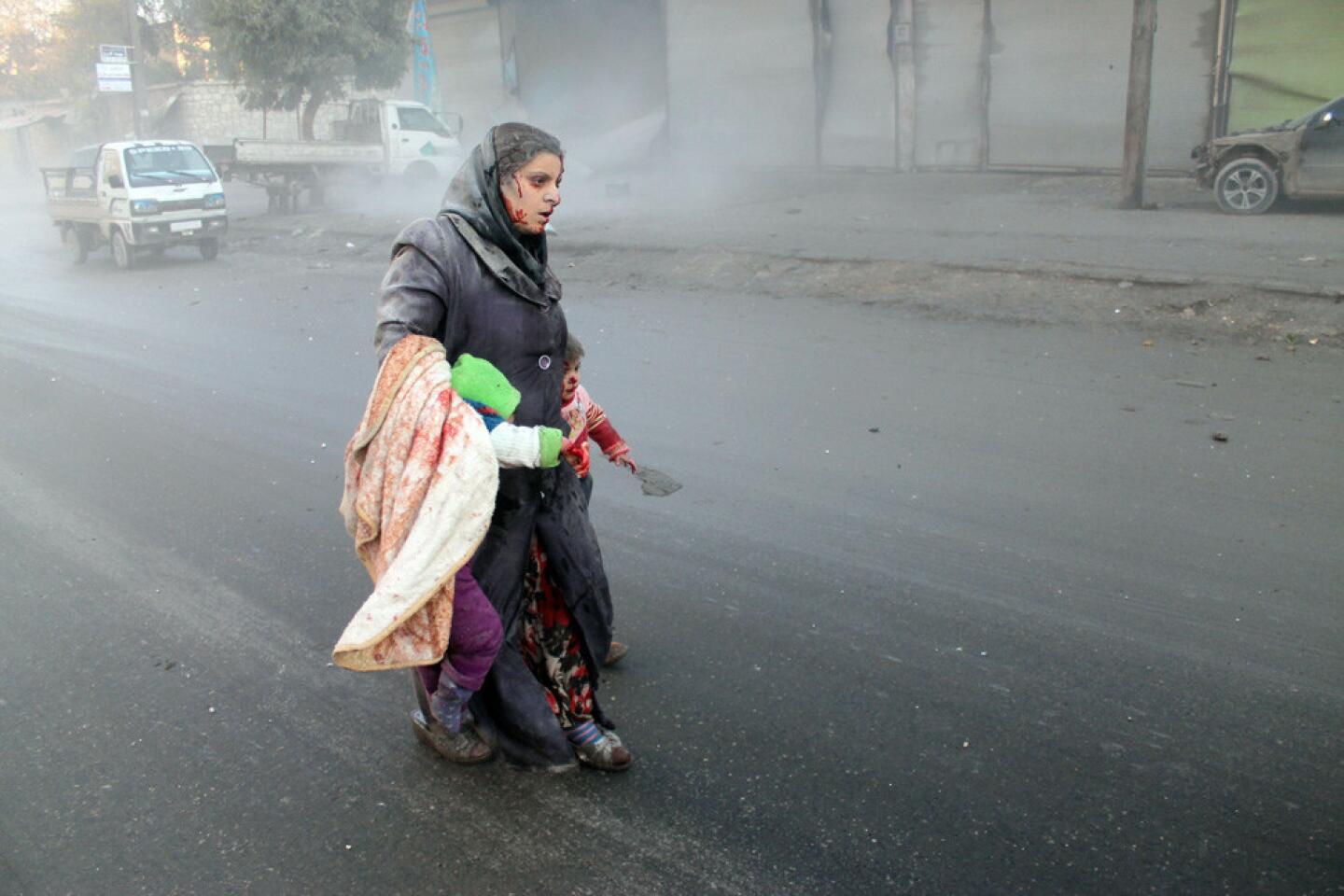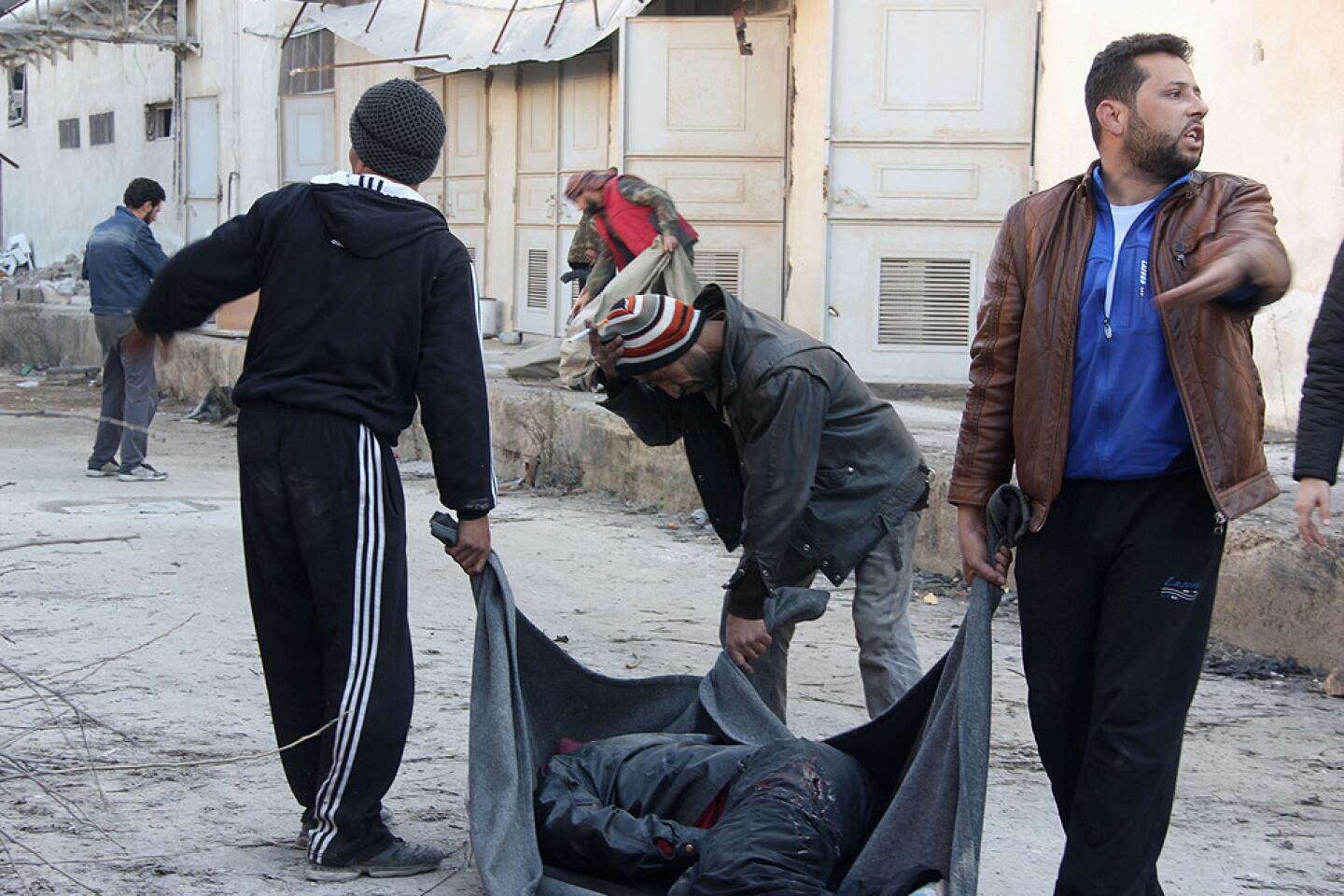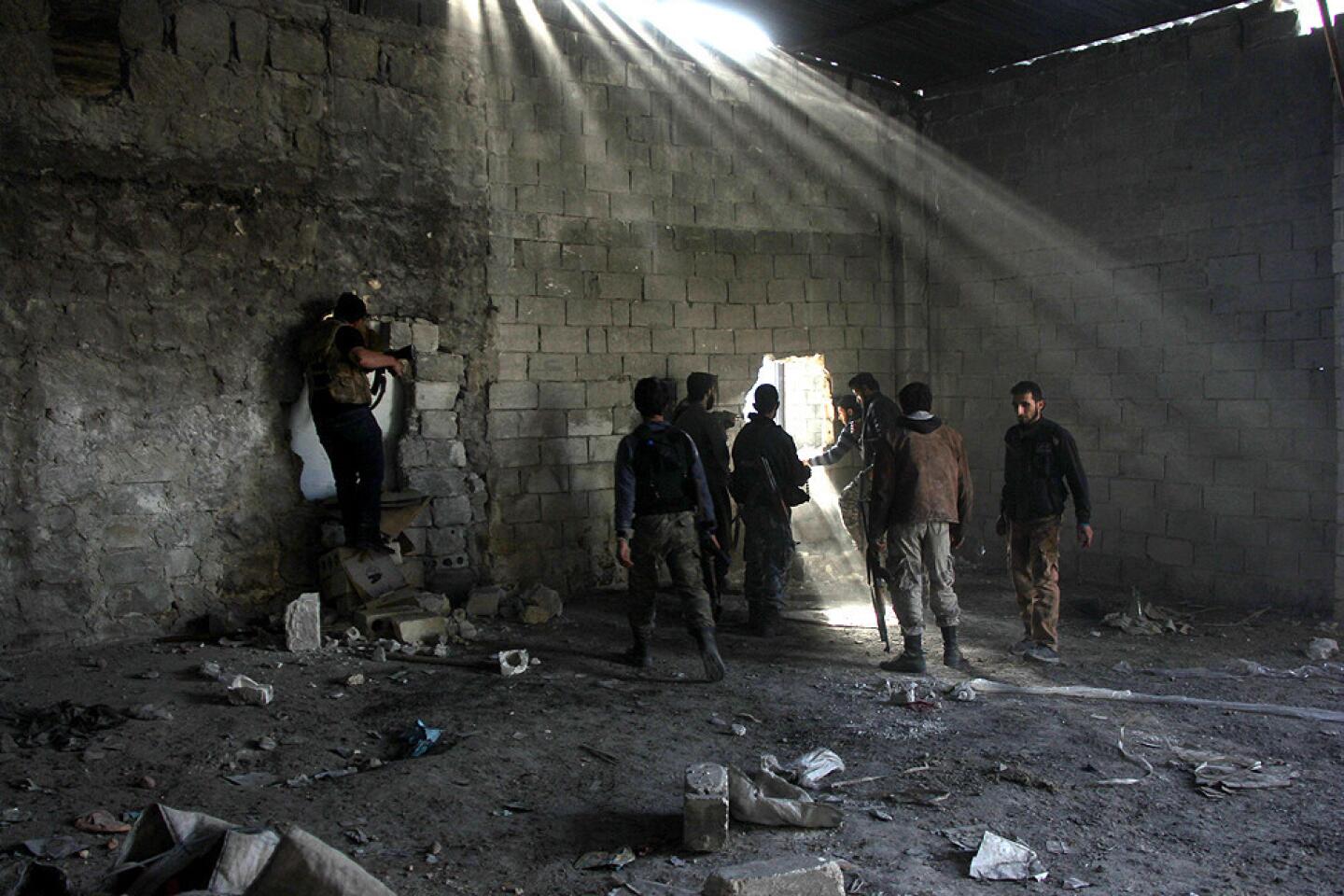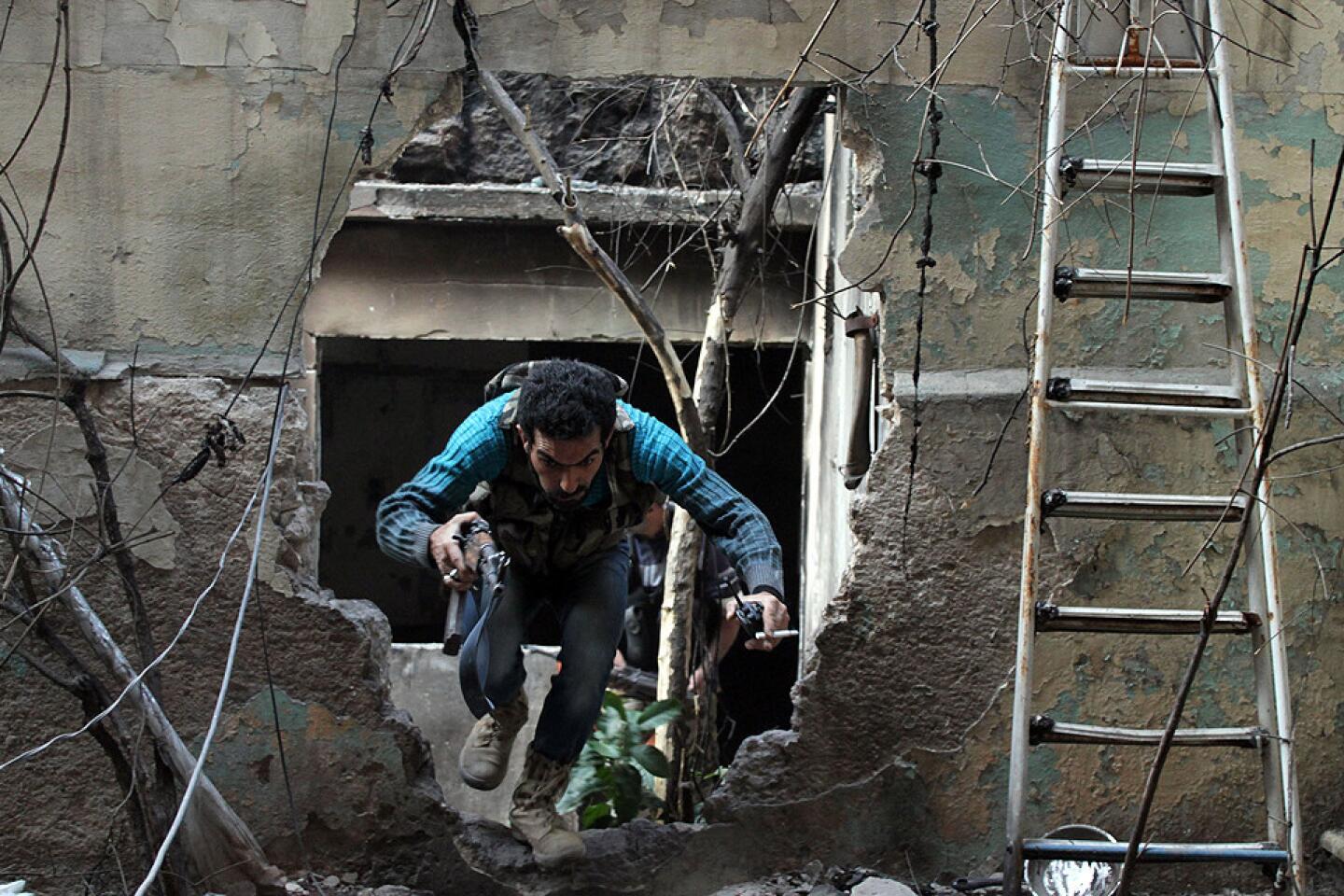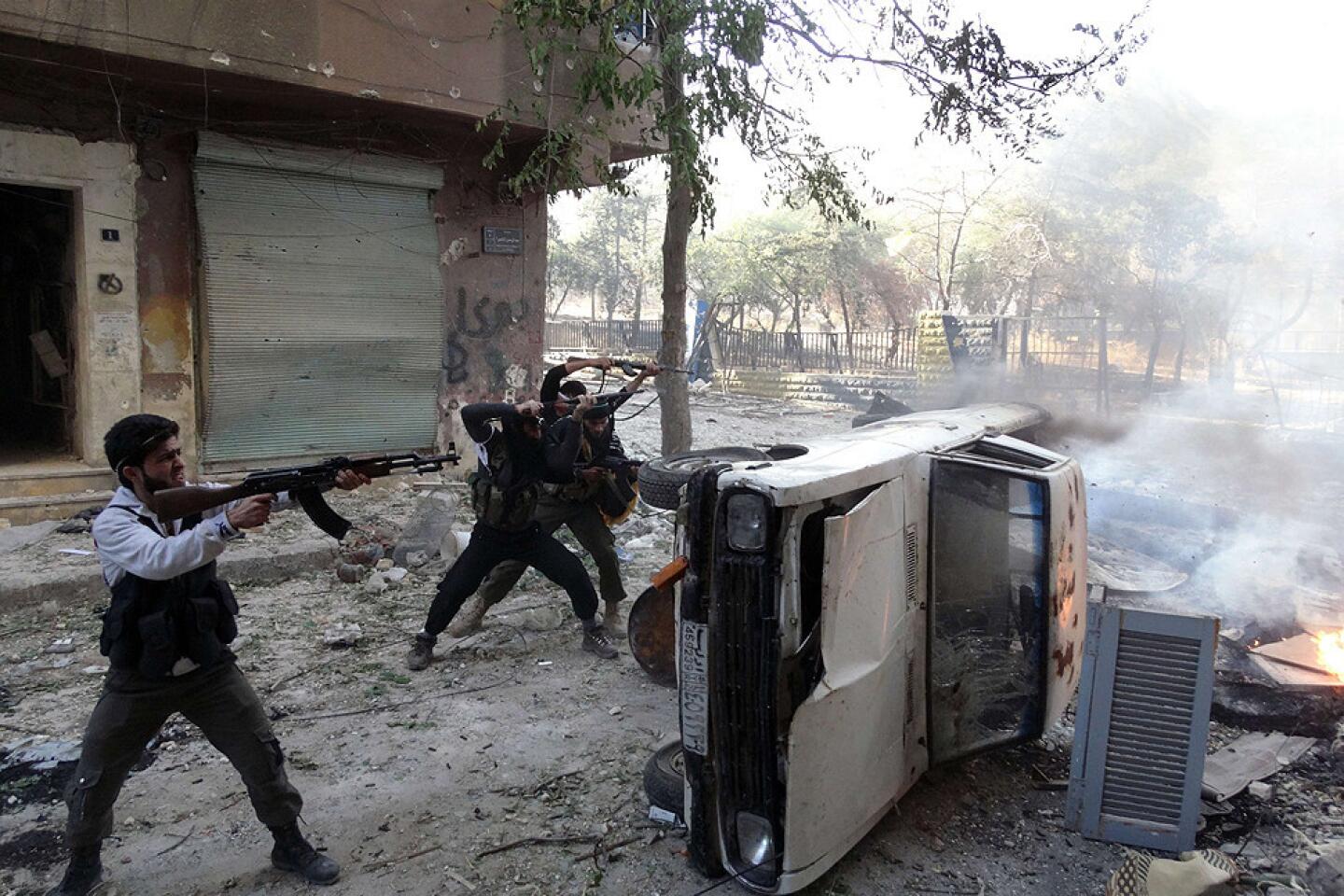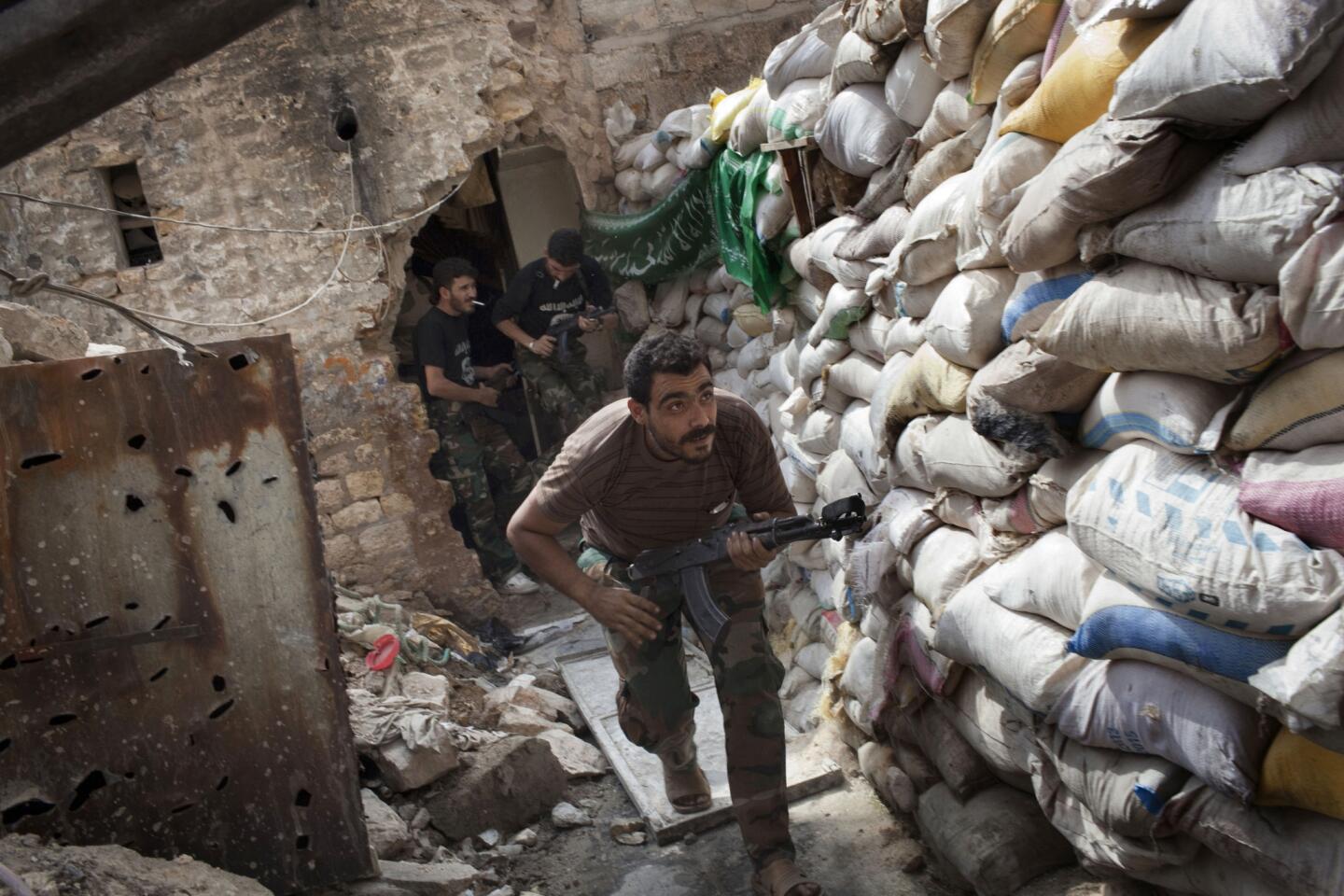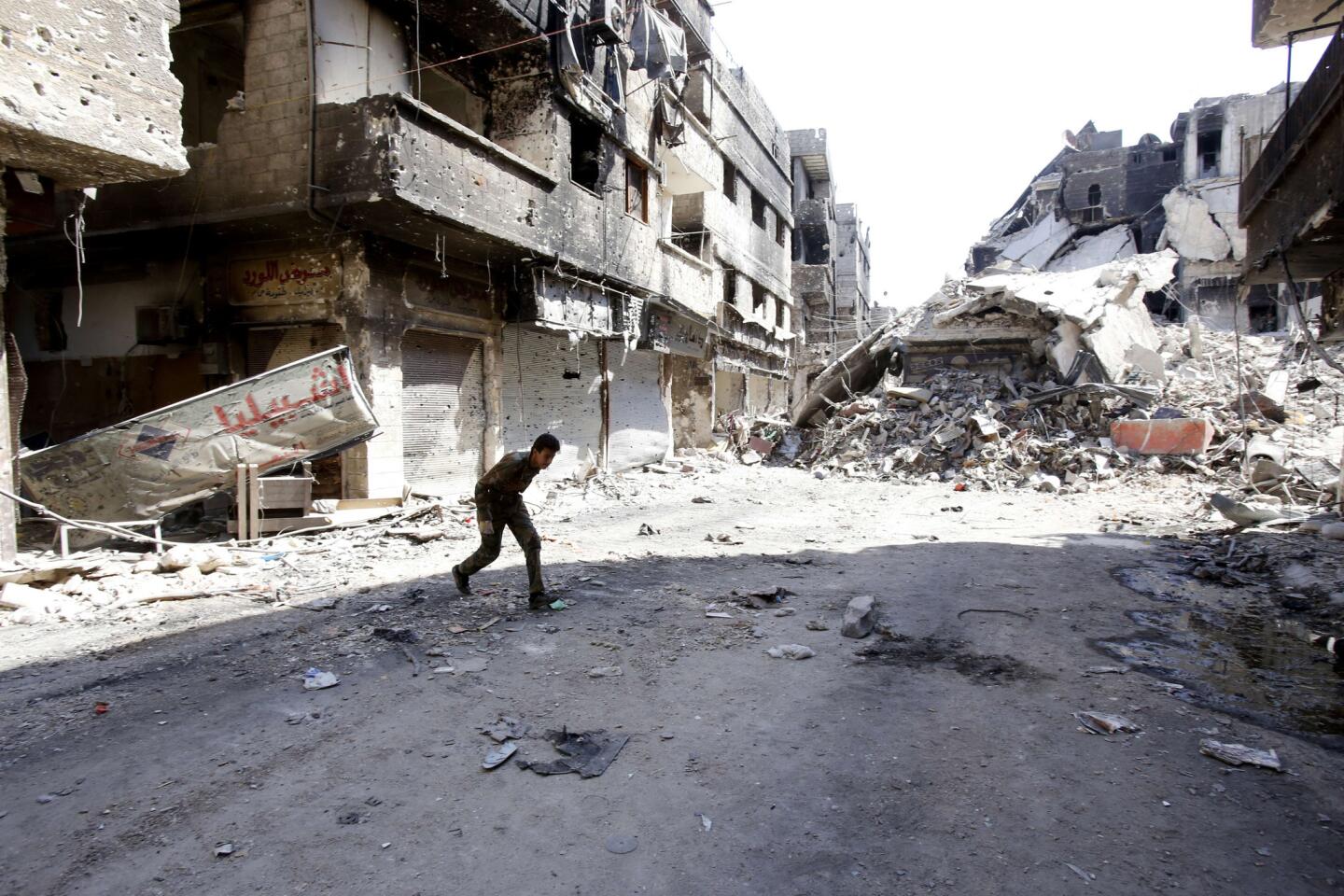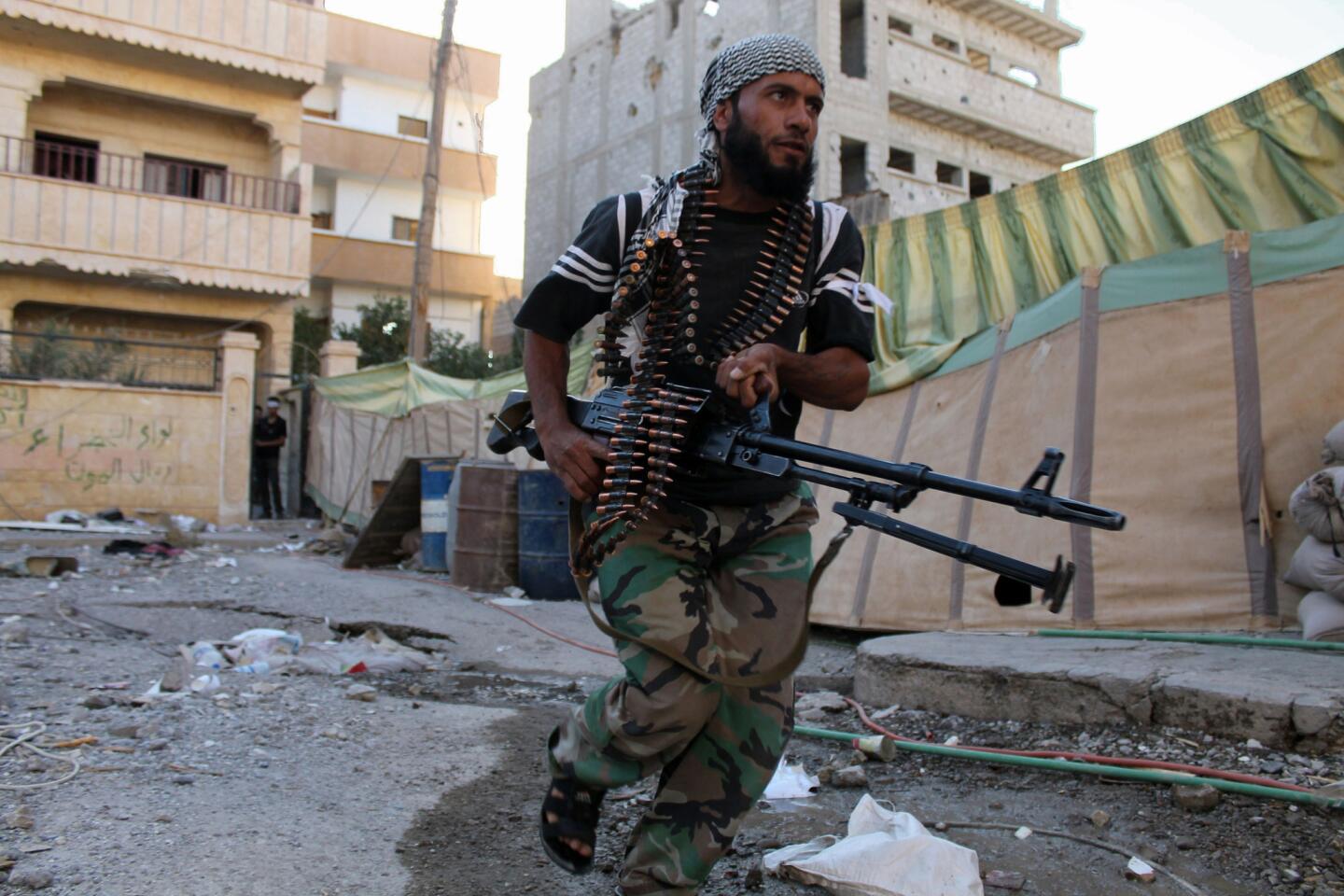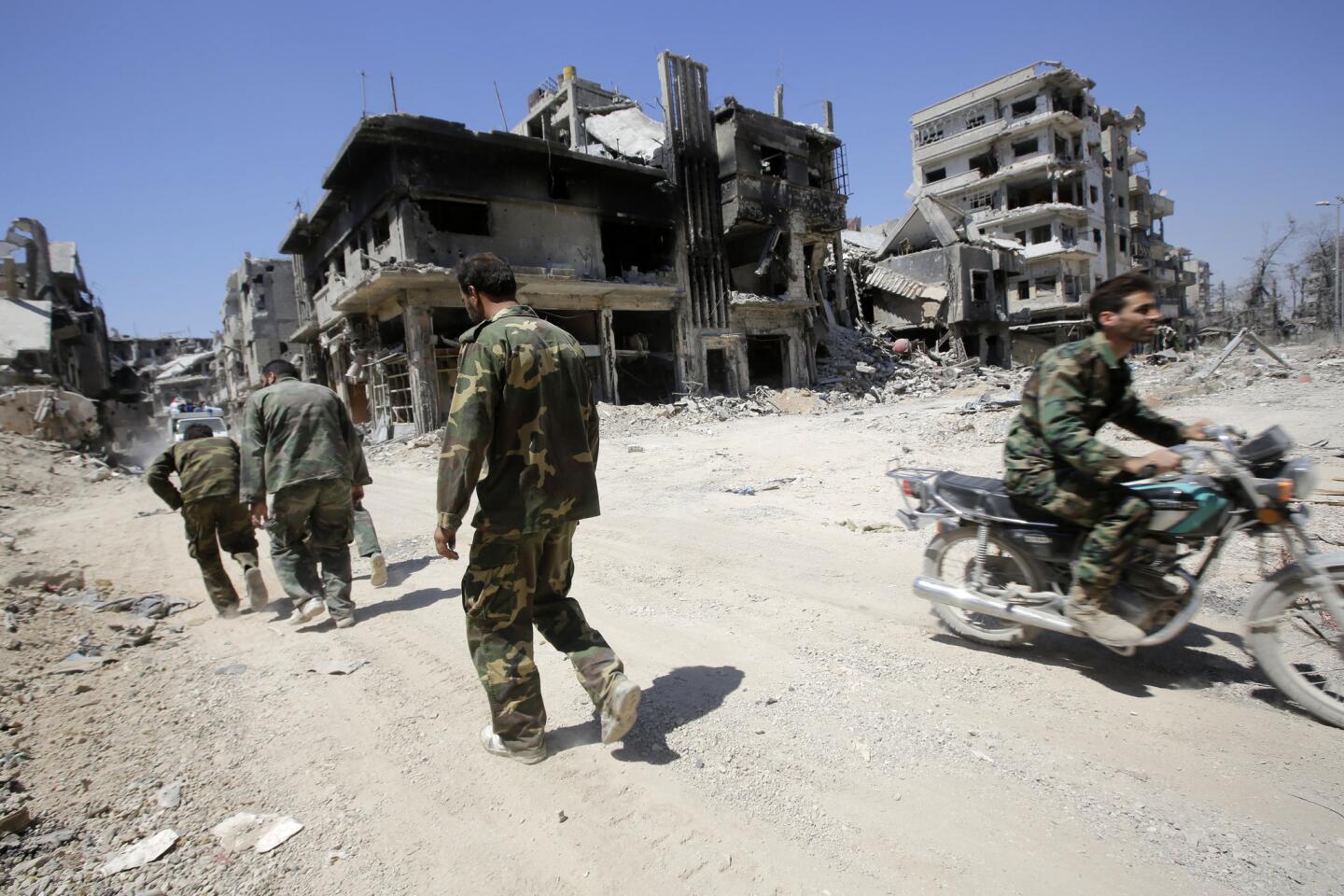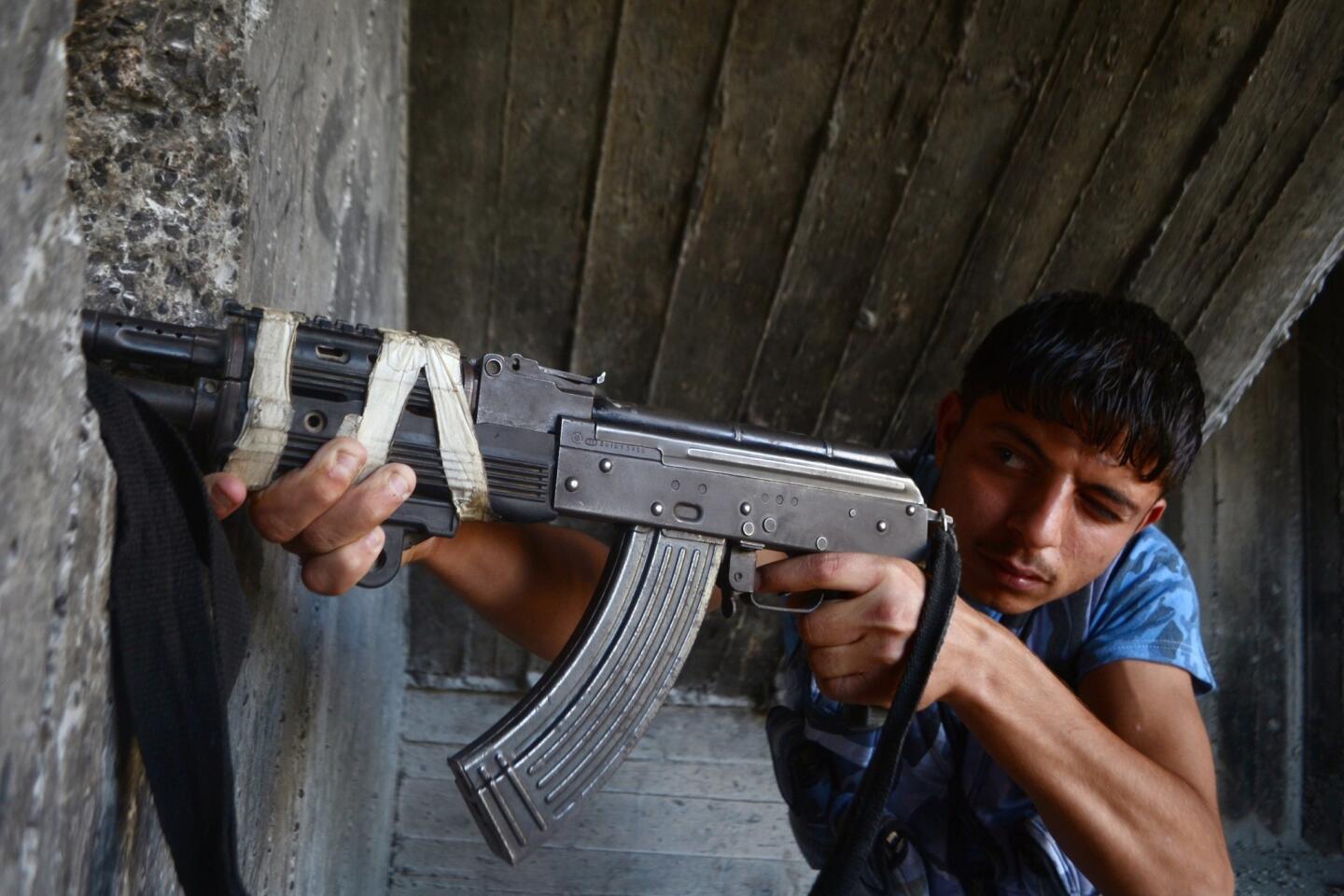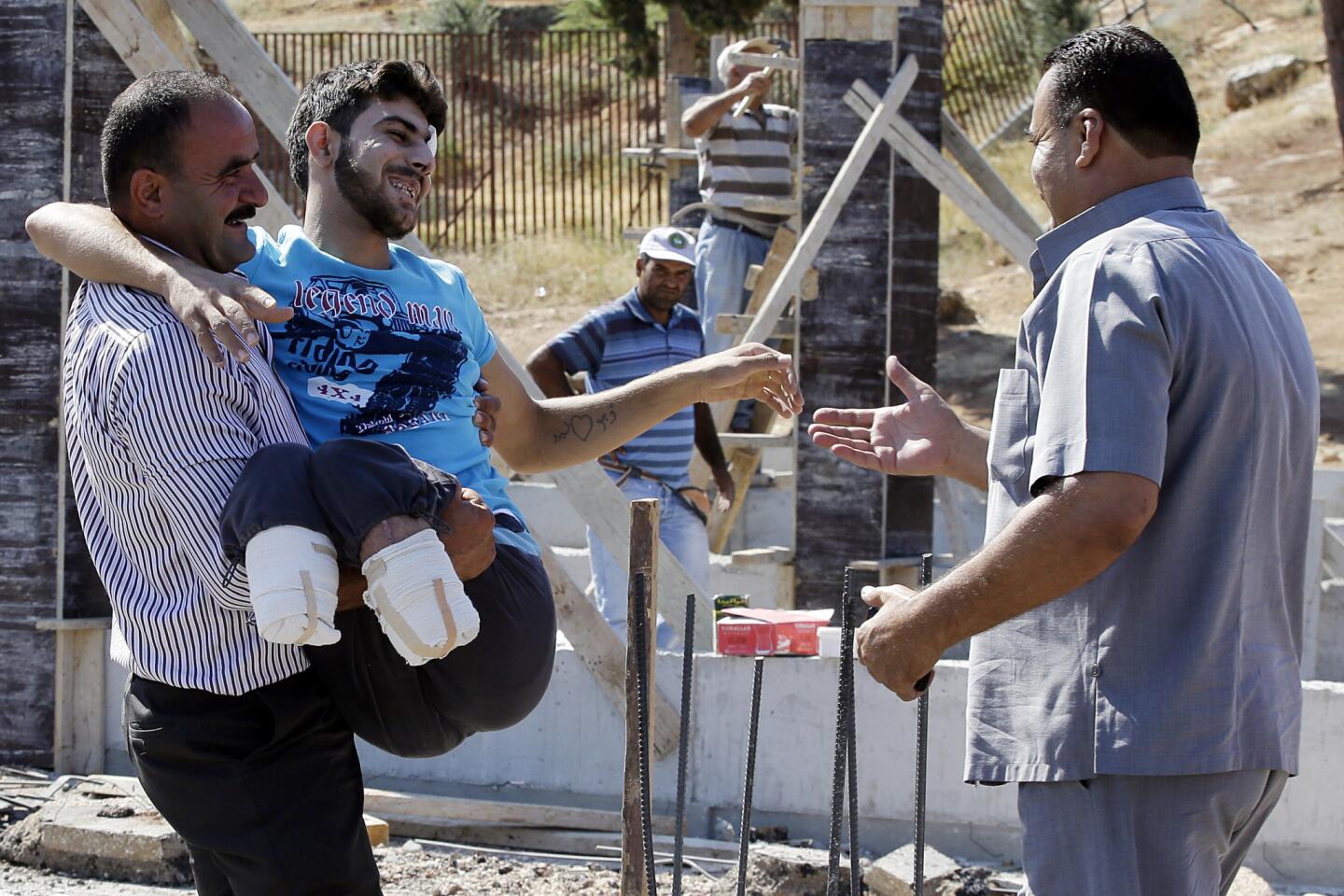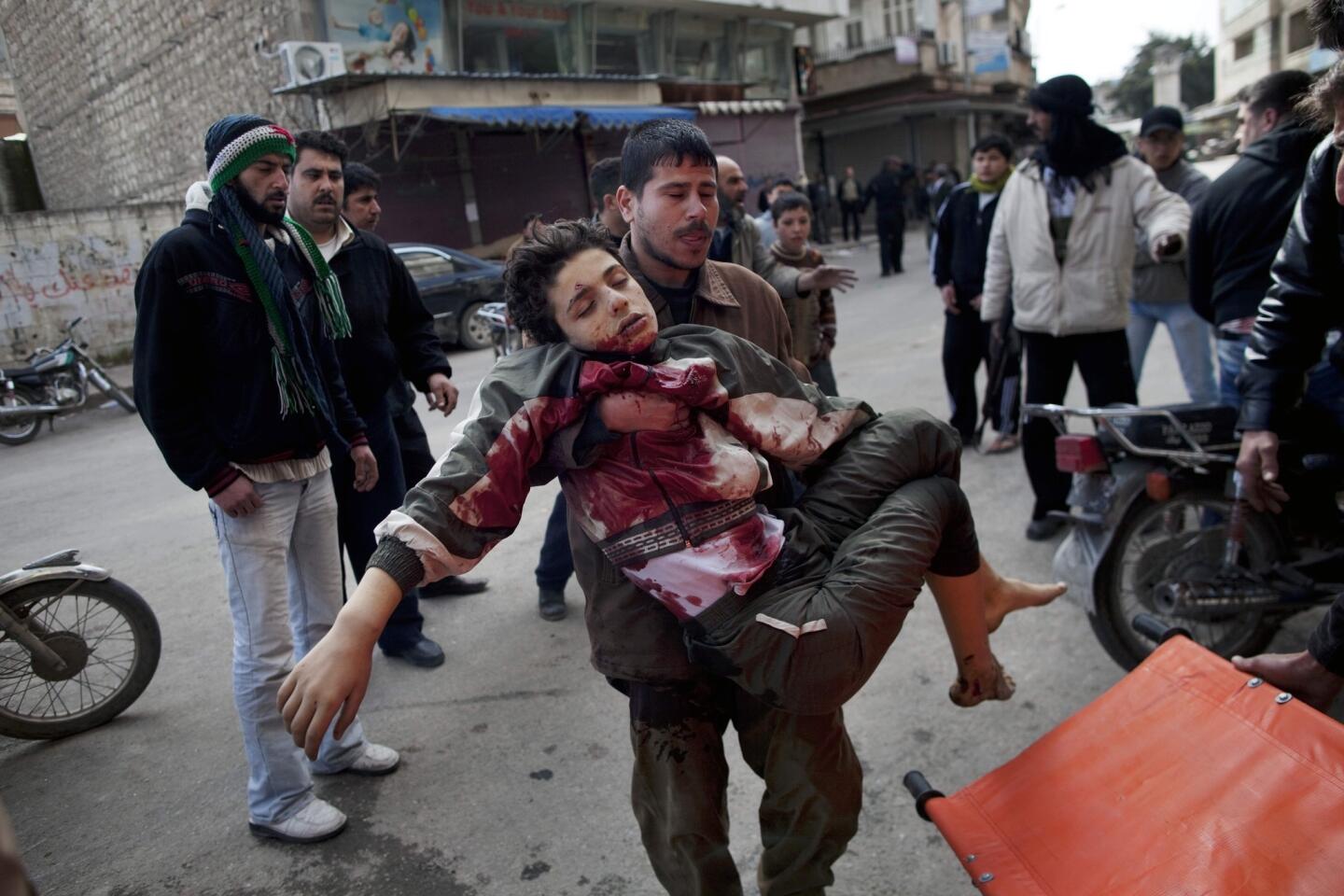U.N. inspectors in Syria suspect chemical weapons used in five areas
- Share via
BEIRUT — A United Nations report released Thursday concluded that chemical weapons probably were deployed on several occasions in Syria, the most convincing evidence coming from the Aug. 21 attacks outside Damascus that left hundreds dead.
Chemical weapons may have been deployed in five of seven cases investigated, occurring between March and August, including the Aug. 21 incident, according to the report. The five locations were Ghouta, Khan Assal, Jobar, Saraqeb and Ashrafiah Sahnaya.
As expected, the 82-page report did not apportion blame for any of the alleged chemical weapons strikes. U.N. guidelines limited the investigators’ scope to determining whether chemical weapons had been used, not who may have deployed toxic arms.
Without a definitive conclusion, the report seems likely to extend the debate about who has used chemical weapons in the Syrian civil war, now in its third year.
Forces loyal to President Bashar Assad and fighters from the opposition have accused each other of deploying poison gas. The allegations are among the most incendiary in a sectarian-fueled conflict marked by frequent reports of massacres and other atrocities.
Various international experts and governments have cited evidence pointing to Syrian forces or the opposition in alleged chemical attacks, but no definitive proof has emerged.
The deadliest and most sensational incident was the series of attacks Aug. 21 in the so-called eastern Ghouta area, which was largely under rebel control. The incident appeared to be the only case in which U.N. investigators — who were in Damascus at the time — succeeded in identifying the likely source of the contamination: surface-to-surface rockets apparently containing payloads of sarin, a deadly nerve agent.
The U.N. investigation “collected clear and convincing evidence that chemical weapons were used against civilians, including children, on a relatively large scale in the Ghouta area,” the report said. The finding backed a conclusion reached in a preliminary U.N. finding in September.
Debates have raged in scientific circles and on the Internet about almost every detail of the Aug. 21 attacks, news of which was quickly broadcast worldwide via video of the victims. Some observers have since questioned the authenticity of the videos and whether some images were staged.
Others have questioned whether the sarin found at the scene of the attacks matched that in Syrian military stocks or was a homemade variant that could have been produced by opposition forces. Similar disputes have swirled around the kind of rocket allegedly used in the attacks and whether the payloads were launched from government-controlled or rebel-held areas.
The U.S. government has maintained that evidence strongly points to Syrian forces as the perpetrators. U.S. officials say more than 1,400 people were killed; other estimates put the number of dead in the hundreds. According to the Obama administration, only the Syrian government had the technical and logistical capability to carry out the strikes.
But an article by Seymour Hersh, a Pulitzer prize-winning investigative journalist, published Sunday in the London Review of Books suggested that U.S. authorities were aware that an Al Qaeda-linked rebel faction, Al Nusrah Front, was capable of producing sarin. U.S. intelligence officials subsequently denied suppressing any evidence about who may have been responsible for the poison gas strikes.
The Aug. 21 attacks eventually led to a U.S.-Russian pact that resulted in the Syrian government agreeing to relinquish its chemical weapons stockpiles under international supervision by mid-2014. The accord averted threatened U.S. airstrikes against the government.
Assad has denied that his military was behind the Aug. 21 attacks and blamed antigovernment rebels seeking to frame Syrian authorities and spur international outrage and U.S.-led intervention against his forces. Opposition representatives also denied being behind those attacks.
The U.N. team concluded that chemical weapons may have been used in four other incidents. However, in each of the four cases, the U.N. experts said, the attacks could not be independently verified because of a lack of reliable samples and an absence of “primary information” on how the chemical weapons may have been delivered. Security concerns prevented the U.N. investigators from visiting most of the sites.
The U.N. team compiling the report was led by Ake Sellstrom, a Swedish scientist.
More to Read
Sign up for Essential California
The most important California stories and recommendations in your inbox every morning.
You may occasionally receive promotional content from the Los Angeles Times.
